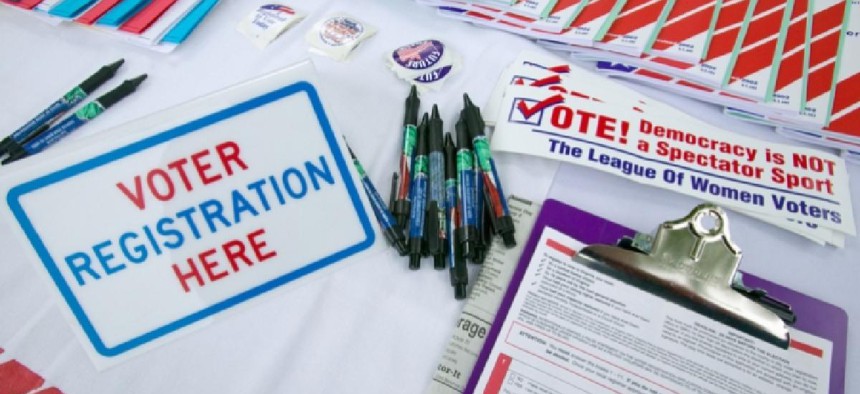Elections (Archived)
New research confirms rigged elections – against Democrats

image - Shutterstock
On the cusp of a crucial national election that may hinge on voter turnout in heavily Democratic Philadelphia, new data has added to a growing body of research showing that legislative elections are biased against cities and towns.
Statewide candidates’ fates will largely be determined by Philadelphia and its suburbs – and while many races are close, Dems are favored to win nearly the whole top of the ticket. But down ballot, it’s a different picture. The Democrats look more like a rump party.
They hold just five of PA’s 18 congressional districts, and Republicans have similarly wide majorities in the state legislature. There is talk about the GOP winning a symbolic (but telling) veto-proof majority in the state senate.
To PA Democrats, that’s no accident. They say Republicans have effectively gerrymandered the state in their favor.
“In 2010, the national Republicans made a real push through all the state legislatures to control redistricting – we ended up with some of the most serious redistricting, and some of the most gerrymandered districts in the country,” said Dan Fee, speaking to City & State last week on the subject of possible Democratic legislative losses.
Other Dems echoed Fee’s sentiments. Willamette University professor Paul Diller says that his new research, which studies Pennsylvania and a handful of other states, confirms this belief – up to a point.
“[Republicans] have used the strategy of packing and cracking. Packing as many Dems as possible into dense urban areas, but also spreading more Republicans out over suburban and rural districts, usually by lower margins than Democratic-held districts,” Diller said. “The result is a state Legislature that doesn't reflect the overall population.”
Democrats were complicit too, with incumbents enjoying virtually impregnable urban districts. But Diller said that his research found that gerrymandering only accounted for two-thirds of the Republican advantage in congressional races.
“The research shows that even if you had neutral districts, those not drawn for political reasons, you might still have some of these imbalances. That’s because Democrats tend to be so densely packed in urban areas,” he said.
The difficulty comes from two possibly irreconcilable desires: Drawing political districts that are both competitive and compact. But as more Democrats cluster in dense population centers, this becomes more difficult to achieve with any degree of practicality, according to Diller.
“All states say they want their districts to be compact and contiguous,” he explained. “If you allowed for non-compact and non-contiguous districts, you could have competitive districts that were like long strips across the state. You would be gerrymandering for political neutrality. But you wouldn’t have good local representatives.”
Not that that scenario was likely to ever happen. Diller recommended first adopting a depoliticized redistricting process.
In Pennsylvania, the effect of gerrymandering was mostly felt in congressional districts, Diller said. Large state Legislatures often dampened the practical impact of gerrymandering.
The Keystone State’s legislature is the second largest in the nation, with 253 representatives.
“That could say two things: One is that Republicans in PA take different stances – maybe they really do move their views closer to the center to make themselves more palatable,” he said. That's the scenario that sounds good democratically – that Republicans are moderating their views. The more malign scenario is that this just shows how effective their redistricting has been.”
